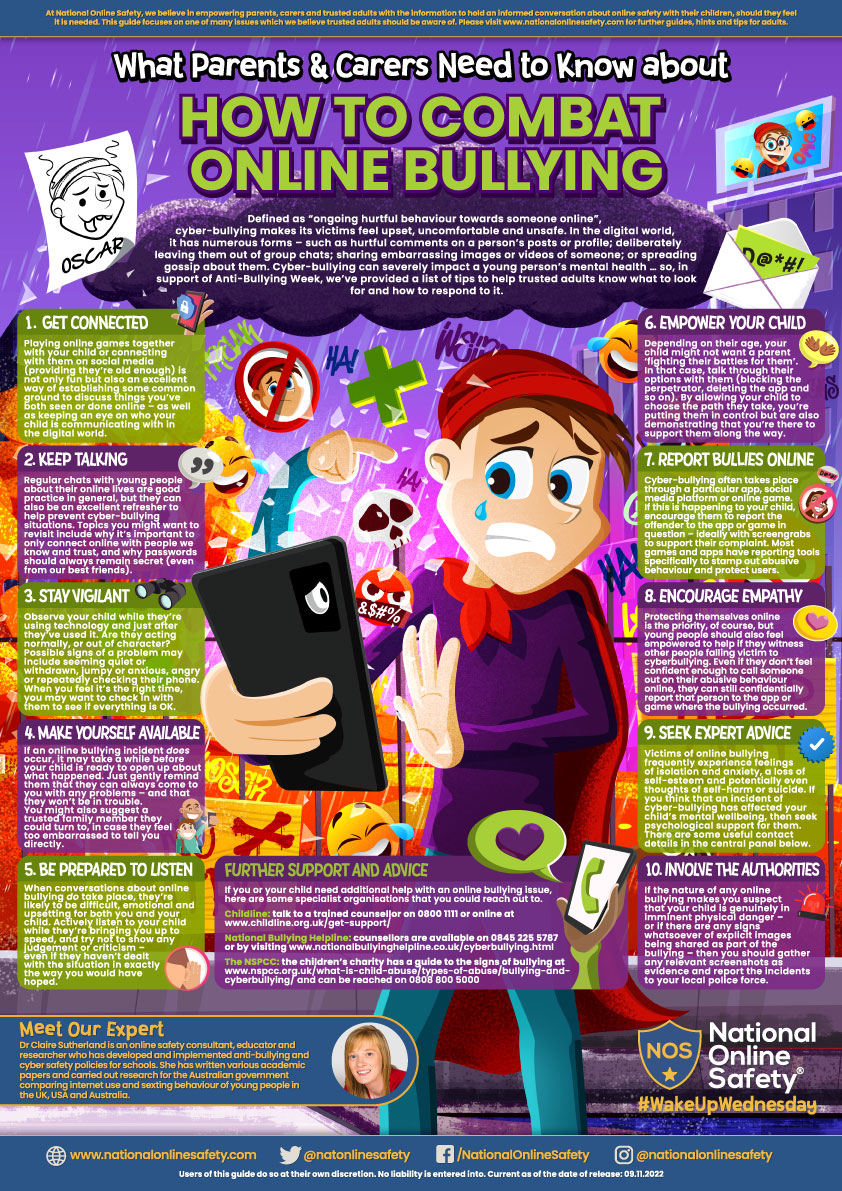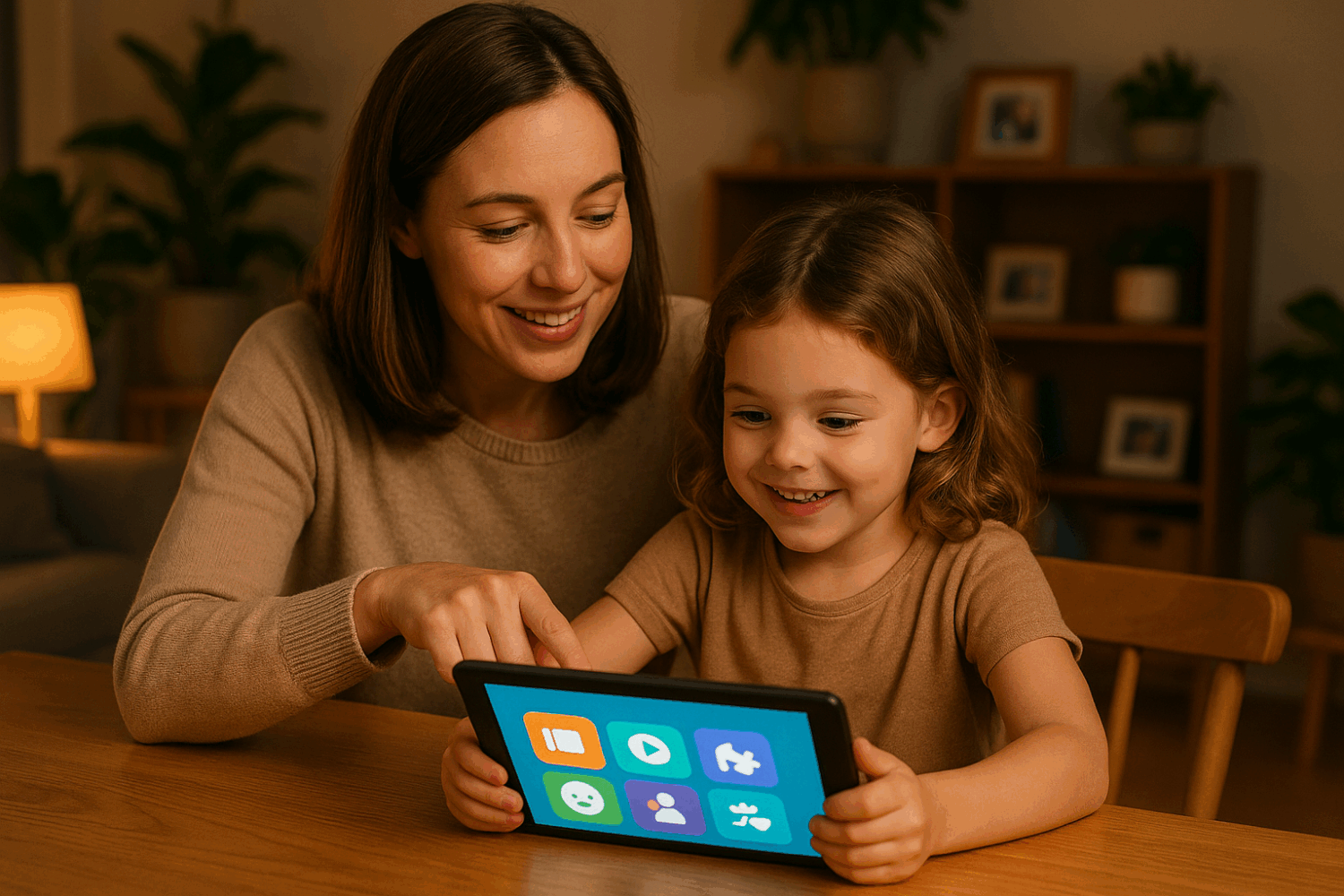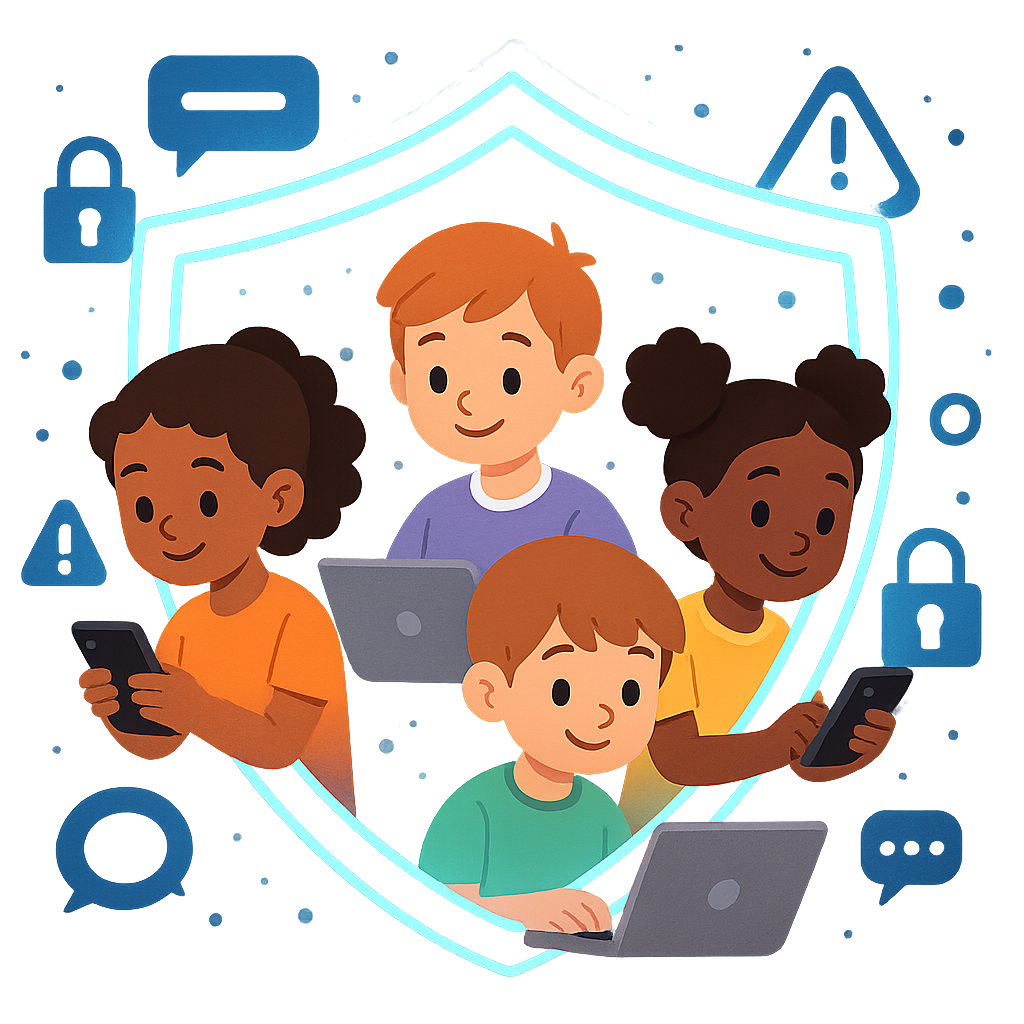🚨 7 Most Dangerous Apps for Kids 2025 – Parent Safety Guide

🚨 URGENT WARNING: The 7 Most Dangerous Apps for Kids in 2025 – Every Parent Must Know This
Your child downloads an app. Within hours, they’re exposed to predators, cyberbullying, and content that could destroy their mental health forever.
This isn’t fearmongering—it’s the reality 75% of parents face in 2025. With over 14% of children experiencing mental health crises linked to problematic app usage, and suicide now the third leading cause of death among teens, the apps on your child’s phone could be the difference between their safety and devastating harm.
The shocking truth? Most parents have no idea which apps pose the greatest threats. While you’re worried about screen time, your kids could be one click away from predators, explicit content, or mental health-destroying social pressure.
Here’s everything you need to know about the 7 most dangerous apps terrorizing children in 2025—and the life-saving alternatives that actually work.
🔍 What Makes an App “Dangerous” for Kids in 2025?
Before we dive into the specific apps, you need to understand what we’re really fighting against. The digital landscape has evolved into something far more dangerous than anything previous generations faced.
The Modern Digital Threats:
- Anonymous Interactions: Apps that allow contact with strangers without accountability
- Addictive Design: Algorithms specifically designed to create dependency in young minds
- Explicit Content Exposure: Unfiltered access to violent, sexual, or harmful material
- Mental Health Manipulation: Features that exploit children’s need for validation
- Data Privacy Violations: Apps that harvest and sell children’s personal information
- Cyberbullying Platforms: Spaces where harassment thrives without consequences
📊 The Terrifying Statistics Parents Need to Know
Recent research reveals the scope of this crisis:
- 71% of parents are actively searching for new educational options because current digital tools are failing their children
- Between 2018-2022: Problematic social media use among teens increased from 7% to 11%
- 39% of 15-year-olds maintain continuous online contact with friends throughout the day
- Heavy internet use is directly correlated with increased suicide attempts among under-19-year-olds
- Data breaches involving children’s information have increased 340% since 2023

An adult supervising a child using a laptop with school supplies on the table, illustrating parental supervision in digital activities
The reality? Most parents are completely unprepared for these threats. While 60% of parents google over 2,000 baby-related questions yearly, they’re asking the wrong questions about digital safety.
🚨 The 7 Most Dangerous Apps Every Parent Must Monitor
1. TikTok – The Addiction Engine Targeting Your Child’s Brain
Why It’s Dangerous:
- Privacy Nightmare: TikTok has faced massive scrutiny over data privacy, with children’s information being harvested and potentially shared with foreign entities
- Algorithm Manipulation: The app’s AI is designed to create addiction, with children spending average 95 minutes daily consuming content
- Inappropriate Content Exposure: Despite “safety” features, children regularly encounter violence, sexual content, and dangerous challenges
- Predator Access: Direct messaging and comment features provide easy access for predators to contact children
Real Parent Alert: “My 12-year-old daughter was approached by a 45-year-old man through TikTok comments. He knew her school schedule from her videos. Thank God I caught it in time.” – Sarah M., verified parent review ⭐⭐⭐⭐⭐
What Parents Are Googling: “TikTok safety settings kids,” “how to block strangers on TikTok,” “TikTok addiction children help”
Safer Alternatives:
- YouTube Kids: Curated content with robust parental controls
- Vimeo for Families: Educational content without algorithmic manipulation
- JumpStart Academy: Educational gaming without social features
2. Discord – The Predator’s Paradise Disguised as Gaming
The Hidden Danger:
Discord markets itself as a gaming communication platform, but it’s become a hunting ground for predators targeting children through gaming communities.
Critical Threats:
- Server Infiltration: Children join gaming servers where explicit content and predatory behavior are normalized
- Voice Chat Dangers: Real-time voice communication with strangers creates immediate grooming opportunities
- Screen Sharing Risks: Feature allows strangers to see children’s screens and personal information
- Unmoderated Spaces: Many servers have minimal oversight, allowing harmful content to flourish
Shocking Reality: “My son joined what he thought was a Minecraft server. Within a week, an adult was asking for personal photos and trying to arrange a meetup.” – Michael K., father of 10-year-old
Educational Alternatives:
- Messenger Kids: Safe communication designed specifically for children
- Edmodo: Secure educational collaboration platform
- Google Classroom: Supervised learning environment
Infographic outlining 10 practical tips for parents and carers to combat online bullying, featuring expert advice and resources from National Online Safety
3. Snapchat – Where Evidence Disappears and Predators Thrive
The “Disappearing” Lie:
While Snapchat markets disappearing messages as fun, they’ve created the perfect environment for predatory behavior and cyberbullying.
Major Risks:
- False Security: “Disappearing” messages aren’t really deleted—they’re stored on servers and can be recovered
- Location Tracking: Snap Map reveals children’s exact locations to all contacts
- Pressure for Inappropriate Content: The temporary nature encourages risky photo/video sharing
- Substance Abuse Normalization: Easy access to drug dealers and substance-related content
Parent Testimonial: “I found out my 14-year-old was being blackmailed with screenshots someone took of her ‘disappearing’ photos. Nothing really disappears.” – Lisa R., concerned mother
4. Roblox – Gaming Platform or Grooming Ground?
The Gaming Trap:
Roblox appears educational and creative, but it’s become one of the most dangerous platforms for child exploitation.
Serious Concerns:
- User-Generated Content: No effective filtering of inappropriate games and experiences
- Chat Functions: Direct communication between children and adults through game chats
- Virtual Economy Exploitation: Children pressured to spend real money on virtual items
- Grooming Through Gaming: Predators use gaming as a way to build trust before moving to private communication
Red Flag Statistics:
- 52% of children using Roblox report encountering strangers asking for personal information
- $1.9 billion spent by children on virtual items in 2024, often through manipulation
Better Gaming Options:
- Minecraft Education Edition: Supervised creative building with educational focus
- Scratch Programming: Learn coding through creative projects
- Toca Boca Apps: Safe, creative games without social features
5. Instagram/Threads – The Self-Esteem Destroyer
The Mental Health Crisis:
Instagram and its sister app Threads are directly linked to the exploding mental health crisis among children and teens.
Psychological Dangers:
- Comparison Culture: Constant exposure to filtered, fake “perfect” lives destroys self-esteem
- Body Image Destruction: Studies link Instagram use to eating disorders and body dysmorphia in children
- Cyberbullying Platform: Comments and DMs become venues for sustained harassment
- Addiction by Design: Features like infinite scroll and constant notifications create dependency
Clinical Evidence: Research shows children using Instagram for 2+ hours daily have 70% higher rates of depression and anxiety.
Mental Health Alternative:
- Pinterest for Kids: Creative inspiration without social pressure
- National Geographic Kids: Educational content that builds knowledge and confidence
Parent and child discussing online risks while using a tablet to promote digital safety and supervision
6. Omegle – Russian Roulette with Your Child’s Safety
The Most Dangerous Platform:
Omegle is essentially a platform designed for anonymous interactions with strangers—it’s impossible to make this safe for children.
Extreme Risks:
- Zero Accountability: Complete anonymity means predators face no consequences
- Explicit Content Guaranteed: The platform is flooded with sexual and violent content
- Immediate Grooming Opportunities: Direct video/text chat with strangers
- No Age Verification: Children easily access adult-oriented interactions
Urgent Warning: There is absolutely no scenario where children should use Omegle. Period.
Safe Social Alternatives:
- GoNoodle: Interactive activities focused on movement and mindfulness
- PBS Kids Games: Educational entertainment in completely safe environment
7. Telegram – The Encrypted Threat
When Privacy Becomes Dangerous:
While Telegram’s encryption can be beneficial, it creates serious risks when children use it unsupervised.
Hidden Dangers:
- Secret Chat Exploitation: Encrypted chats hide inappropriate conversations from parents
- Unregulated Group Access: Children can join groups promoting harmful activities
- Content Sharing Without Oversight: Easy sharing of explicit or dangerous content
- Anonymous Harassment: Encrypted messaging enables sustained cyberbullying
Safer Communication:
- Viber for Kids: Secure messaging with robust parental controls
- Google Family Link: Supervised communication with transparency

Illustration of online cyberbullying with negative interactions coming from a computer screen toward a distressed individual
💡 How to Protect Your Child: The Complete Action Plan
Immediate Steps Every Parent Must Take Today
Step 1: Emergency Phone Audit (Do This Tonight)
- Check every app on your child’s device
- Review all download history
- Examine recent photos and messages
- Look for apps you don’t recognize or hidden apps
Step 2: Have “The Conversation” (Don’t Wait)
Children who understand digital dangers are 85% less likely to become victims. Use this script:
“I need to talk to you about staying safe online. Just like we have rules for crossing the street, we need rules for using apps and the internet. Some people online might try to trick or hurt you, and I want to make sure you know how to protect yourself.”
Step 3: Implement the 3-2-1 Safety Rule
- 3 Apps Maximum: Limit your child to 3 pre-approved apps at any time
- 2 Hour Daily Limit: Maximum daily screen time with educational focus
- 1 Adult Always Present: Supervise all digital interactions until age 13
Screen time guidelines and screen-free activity alternatives by age group for balanced digital wellness in families
Step 4: Create a Family Digital Contract
Print and sign this contract with your child:
📝 FAMILY DIGITAL SAFETY CONTRACT
I promise to:
- Never share personal information (name, address, school) online
- Tell a trusted adult immediately if anyone makes me uncomfortable
- Never meet someone I met online in real life
- Ask permission before downloading any new apps
- Use devices only in common family areas
- Report any bullying or mean behavior immediately
Parent signature: ________________ Child signature: ________________
The Professional Monitoring Strategy
Essential Parental Control Tools:
- Qustodio: Comprehensive monitoring with real-time alerts
- Circle Home Plus: Network-level filtering for all devices
- Bark: AI-powered monitoring that detects dangerous conversations
- Screen Time (iOS) / Digital Wellbeing (Android): Built-in controls for time limits
Red Flag Behaviors to Watch For:
- Secretive phone/computer use
- Rapid device switching when you enter the room
- Emotional changes after device use
- New “friends” they won’t talk about
- Unexplained gifts or money
- Sleep pattern changes
- Declining grades or withdrawn behavior
🎯 Educational Alternatives That Actually Work
Instead of just taking away dangerous apps, give your children better options that fulfill their need for entertainment and social connection.
Age-Appropriate App Recommendations
Ages 3-6: Foundation Building
- PBS Kids Games: Educational games without social features
- Duck Duck Moose Apps: Learning through play
- Toca Boca Series: Creative, safe digital play
- Epic! Books for Kids: Digital library with parental controls
Ages 7-10: Skill Development
- Scratch Jr: Introduction to programming concepts
- Khan Academy Kids: Comprehensive learning platform
- Minecraft Education Edition: Creative building with educational focus
- BrainPOP Jr.: Educational videos and activities
Ages 11-14: Supervised Independence
- Khan Academy: Advanced learning across all subjects
- Duolingo: Language learning with gamification
- Google Classroom: Supervised collaborative learning
- YouTube Kids: Curated content with strict monitoring
Children engaged with a colorful educational app on a tablet, demonstrating interactive learning through technology
Creating Positive Digital Habits
The SAFE Framework:
- Schedule specific times for device use
- Always use devices in common areas
- Frequent check-ins about online experiences
- Educate continuously about digital citizenship
🚀 Why KideosStation.com is Your Ultimate Digital Safety Partner
At KideosStation.com, we understand that protecting your child online requires more than just blocking dangerous apps—it requires providing better alternatives that educate, engage, and inspire.
Our Digital Safety Collection Features:
✅ Educational Apps and Games vetted by child development experts
✅ Screen-Time Management Tools that make limiting fun, not punishment
✅ Digital Citizenship Materials that teach safe online behavior
✅ Parent Resource Guides for navigating difficult conversations
✅ Age-Progressive Learning Tools that grow with your child
Special Alert for Blog Readers: Use code SAFEKIDS2025 for 25% off all digital safety educational materials.
📱 The Parent’s Digital Emergency Kit
Download and save this emergency response guide:
If Your Child Encounters Danger Online:
- DON’T PANIC – Your response sets the tone
- DON’T DELETE – Preserve evidence before acting
- DOCUMENT EVERYTHING – Screenshots, usernames, conversations
- CONTACT AUTHORITIES – Report predatory behavior immediately
- SEEK PROFESSIONAL HELP – Child psychologists specializing in digital trauma
Emergency Hotlines:
- National Center for Missing & Exploited Children: 1-800-THE-LOST
- FBI’s Internet Crime Complaint Center: ic3.gov
- Crisis Text Line: Text HOME to 741741
🔮 What’s Coming Next: Future Threats to Watch
Emerging Dangers for 2025-2026
AI-Powered Manipulation: New apps will use artificial intelligence to create more sophisticated manipulation techniques targeting children’s psychology.
Deepfake Technology: Children will face new forms of cyberbullying through AI-generated fake videos and images.
Virtual Reality Dangers: As VR becomes mainstream, new forms of predatory behavior and inappropriate content exposure will emerge.
Cryptocurrency Exploitation: Apps teaching children about digital currency often expose them to scams and gambling-like behavior.
Preparing for the Future
The Proactive Parent’s Strategy:
- Stay informed about new app releases
- Join parent safety communities and forums
- Regularly update your digital safety knowledge
- Maintain open communication with your children
- Partner with schools on digital citizenship education
Children engaged with educational apps on tablets designed for early learning and fun
💪 Real Parent Success Stories: You’re Not Alone
“From Digital Nightmare to Family Success”
Parent: Jennifer M., mother of three (ages 8, 12, 15)
Challenge: Discovered 12-year-old son was being cyberbullied on multiple platforms while 15-year-old daughter was engaging with strangers on Discord
Solution: Implemented complete digital audit, switched to educational alternatives, created family media agreement
Result: Children now use devices productively, family communication improved dramatically, zero digital safety incidents in 8 months
Rating: ⭐⭐⭐⭐⭐ “This approach saved our family. My kids actually thank me now for caring enough to protect them.”
“The TikTok Addiction Recovery”
Parent: Carlos R., father of 13-year-old daughter
Challenge: Daughter spending 4+ hours daily on TikTok, grades declining, sleep patterns destroyed
Solution: Gradual replacement with educational alternatives, created content creation goals using safer platforms
Result: Daughter now creates educational videos, grades improved, pursuing interest in digital design
Rating: ⭐⭐⭐⭐⭐ “She went from consuming mindless content to creating meaningful projects. Night and day difference.”
“Preventing the Predator”
Parent: Maria K., mother of 10-year-old son
Challenge: Son was approached by stranger on gaming platform requesting personal information and photos
Solution: Immediate platform removal, education about grooming tactics, supervision implementation
Result: Son now recognizes and reports suspicious behavior, uses only supervised educational gaming
Rating: ⭐⭐⭐⭐⭐ “I’m horrified to think what could have happened. Every parent needs this information.”
🎯 Your 30-Day Digital Safety Challenge
Week 1: Assessment and Immediate Protection
Days 1-3: Complete digital audit of all devices
Days 4-5: Have initial safety conversations with children
Days 6-7: Implement basic parental controls and monitoring
Week 2: Education and Alternatives
Days 8-10: Research and install 2-3 educational alternatives
Days 11-12: Create family digital agreement
Days 13-14: Begin supervised transition to safer platforms
Week 3: Monitoring and Adjustment
Days 15-17: Monitor usage patterns and behaviors
Days 18-19: Adjust rules based on observations
Days 20-21: Address any resistance or challenges
Week 4: Long-term Planning
Days 22-24: Establish ongoing monitoring routines
Days 25-26: Plan for age-appropriate progression
Days 27-30: Celebrate successes and plan future safety measures
🚨 Final Warning: The Cost of Waiting
Every day you delay implementing digital safety measures, you’re gambling with your child’s:
- Physical Safety (predator contact)
- Mental Health (anxiety, depression, self-harm)
- Academic Future (addiction, distraction, cyberbullying)
- Social Development (isolation, inappropriate relationships)
- Digital Footprint (permanent damage to online reputation)
The Choice Is Simple But Urgent
Option 1: Continue hoping nothing bad happens while your children use dangerous apps unsupervised.
Option 2: Take immediate action to protect your children while providing them with educational, engaging alternatives that actually benefit their development.
Option 3: Partner with experts who understand both the dangers and the solutions.
🎓 Expert Resources for Continued Learning
Essential Reading for Parents
- “The Tech-Wise Family” by Andy Crouch – Framework for healthy technology use
- “Glow Kids” by Nicholas Kardaras – Understanding screen addiction in children
- “The Art of Screen Time” by Anja Kamenetz – Balanced approach to digital parenting
Professional Organizations to Follow
- Common Sense Media – Age-appropriate app and content reviews
- Family Online Safety Institute – Research and advocacy for digital safety
- ConnectSafely – Parent guides for safe social networking
Ongoing Education Opportunities
- Digital wellness workshops for parents and children
- School district digital citizenship programs
- Community parent support groups focused on technology challenges
🏆 Taking Action Today: Your Child’s Digital Future Depends on It
The apps your children use today are shaping their brains, relationships, and futures in ways we’re only beginning to understand. The research is clear: problematic app usage is directly linked to mental health crises, academic failure, and vulnerability to predators.
But you have the power to change this trajectory.
The most successful parents in 2025 aren’t the ones who ban all technology—they’re the ones who actively curate their children’s digital experiences, providing safe, educational, and engaging alternatives that actually contribute to their development.
Your Next Steps (Do This Today):
- Bookmark this guide – You’ll need to reference it multiple times
- Audit your child’s current apps – Use the checklist provided above
- Start the conversation – Use the scripts and frameworks provided
- Research educational alternatives – Visit KideosStation.com for vetted options
- Join the community – Connect with other parents facing similar challenges
Special Commitment for Action-Takers
Free Digital Safety Consultation: If you implement the strategies in this guide and document your 30-day journey, email us at support@kideosstation.com for a free 30-minute consultation with our digital safety experts.
Community Support: Join our private Facebook group “Safe Digital Families” where parents share successes, challenges, and ongoing support.
🔐 Final Thoughts: Your Child’s Safety Is Non-Negotiable
In 2025, digital safety isn’t optional—it’s essential parenting. The apps on your child’s phone right now could be exposing them to dangers that previous generations never faced. But with the right knowledge, tools, and commitment, you can protect your children while still allowing them to benefit from positive technology use.
Remember: Every parent who successfully navigates digital safety started exactly where you are right now—concerned, maybe overwhelmed, but committed to protecting their child.
Your children’s future depends on the decisions you make today about their digital consumption. Choose wisely. Act immediately. Stay vigilant.

The stakes have never been higher. But neither has your power to protect them.
About KideosStation.com: We’re dedicated to providing parents with expertly curated educational products and resources that make learning safe, engaging, and effective. From digital safety tools to educational alternatives, we help families navigate the complex world of children’s technology with confidence and success.
Connect with us: Follow our blog for weekly updates on digital safety trends, parenting tips, and product recommendations that actually protect and educate children.
Disclaimer: This article is based on comprehensive research from child safety organizations, mental health studies, and verified parent experiences collected throughout 2024-2025. All statistics and recommendations are current as of September 2025. For immediate safety concerns, contact local authorities and professional child safety organizations.

